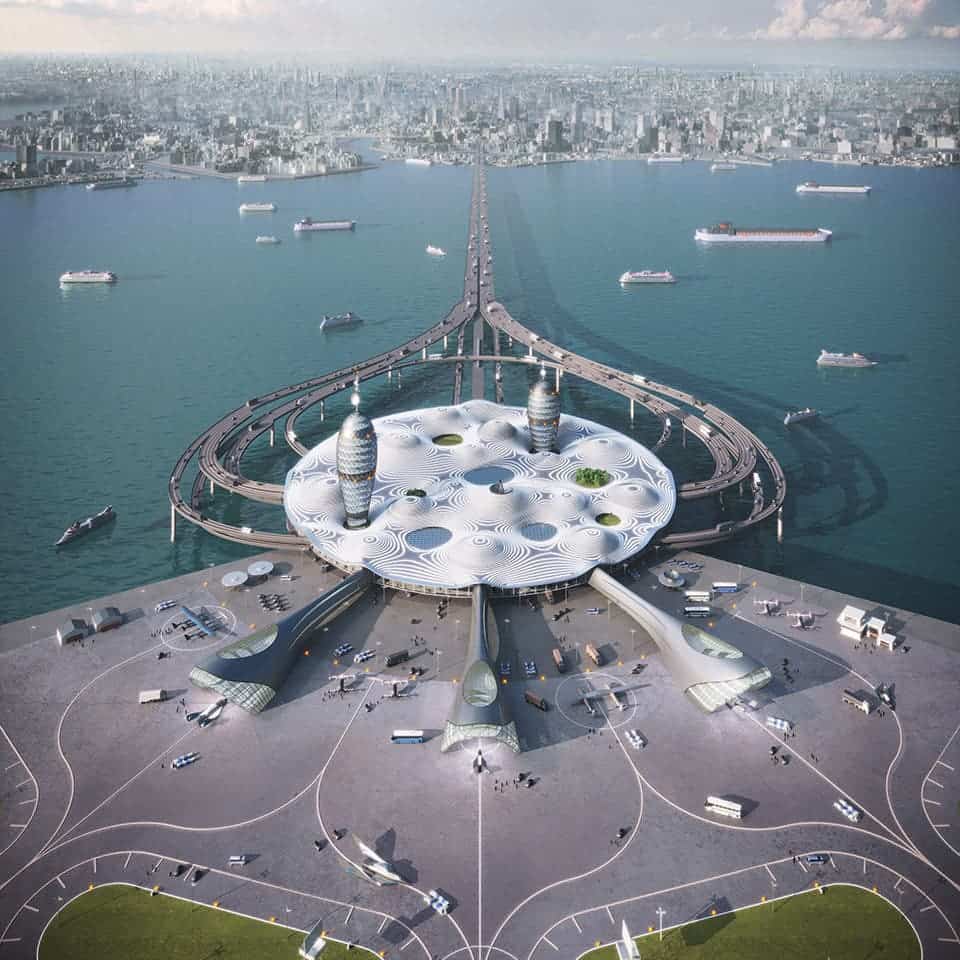
It’s 5:15 a.m. as you board an autonomous train that takes you through a network of bridges to Spaceport City, which sits on a marvelous floating island in Tokyo Bay. An hour later you are scheduled to travel 50 miles up in Earth’s atmosphere, not on a rocket, but on an airplane-like suborbital spaceship, where you’ll get to witness the thrilling experience of microgravity.
‘Sign me up!’ is what most of you are probably thinking at the moment. Alas, the four-story futuristic spaceport in Japan’s capital is but a concept — but one that may offer a glimpse of the future, considering recent developments in private space ventures and the great deal of public interest for space tourism.
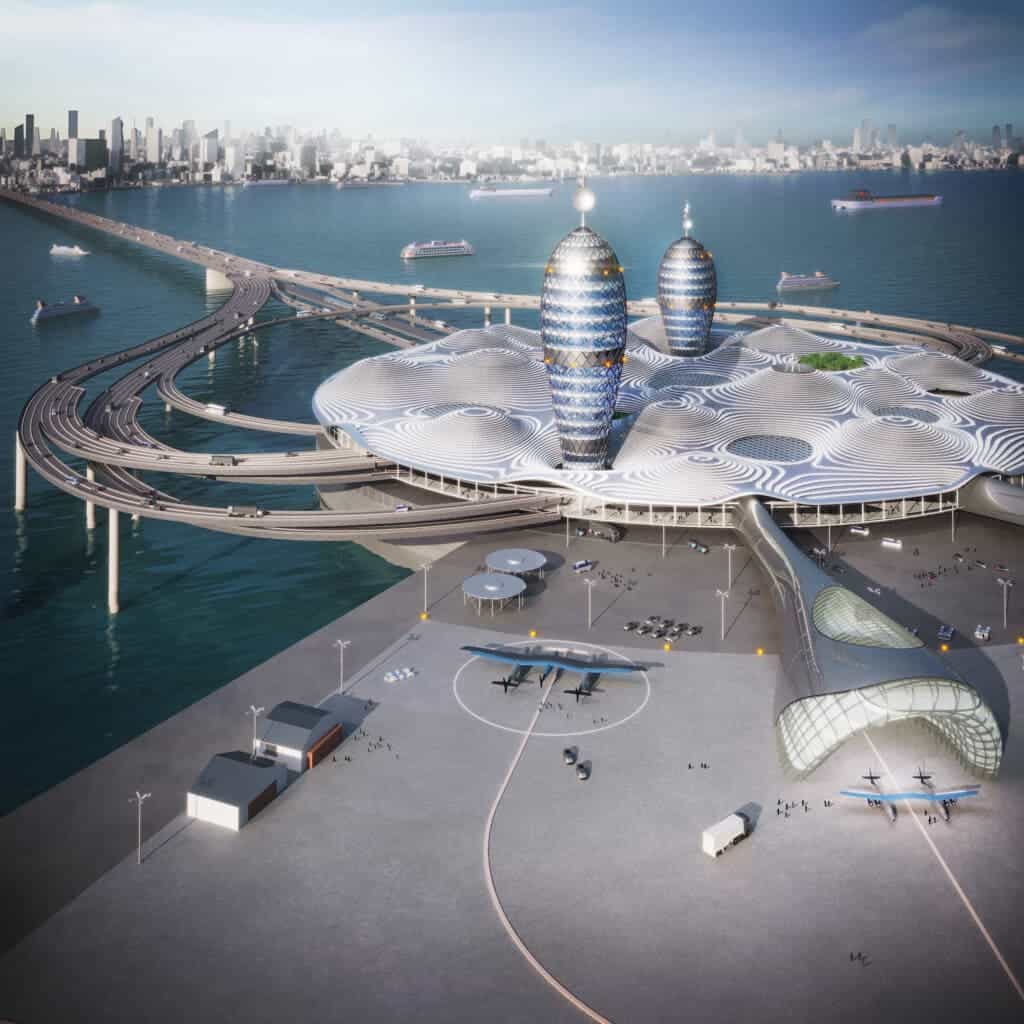
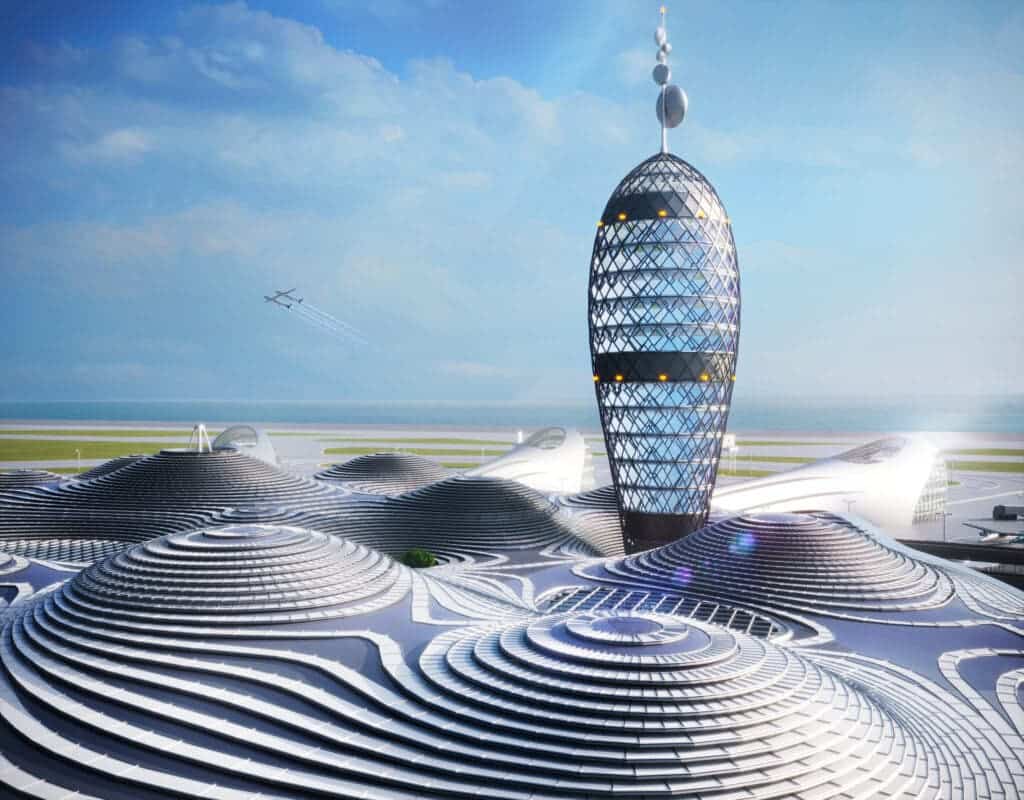
Spaceport Japan was designed by Noiz Architects, in collaboration with the communications agency Denstsu, design firm Canaria, and the non-profit Spaceport Japan, and it’s intended to be a getaway in and of itself. If you can’t afford to go on an expensive suborbital day trip, you can always just go on a day trip to part of the spaceport where there are shops, a hotel, an astronaut-food restaurant, a 4D IMAX movie theater, a gym, an aquarium, and even a disco — all sharing a space theme. The whole project is designed to serve like an open-space museum to go with the main attraction.
There are also research and business facilities inside the glass buildings that rise through undulating solar panel structures, as well as an educational academy and clinic. That’s because it’s not enough to be wealthy to board a spacecraft, you also need to be fit and complete a three-day training program.
The upper levels of the two towers piercing through the solar panels are designed to offer passengers a view of the departures terminal, where they can see space shuttles taking off.
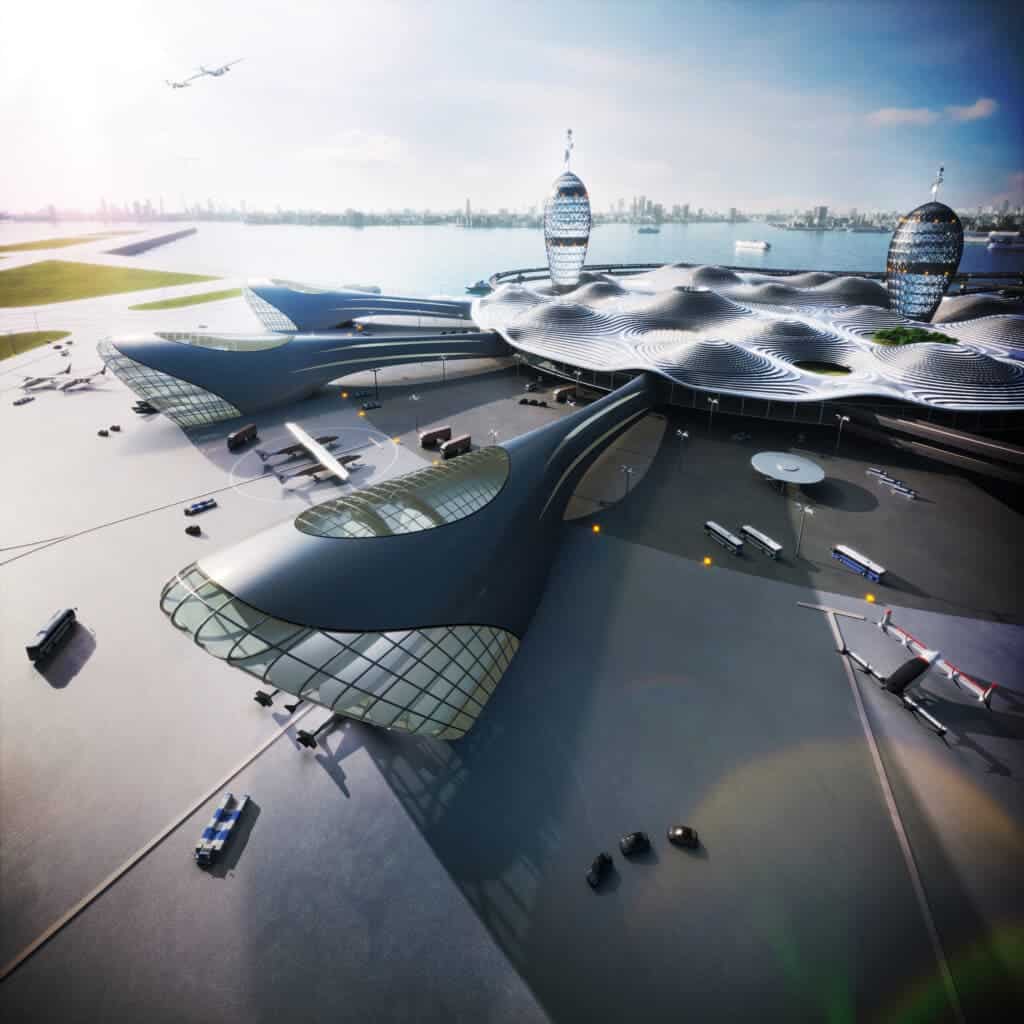
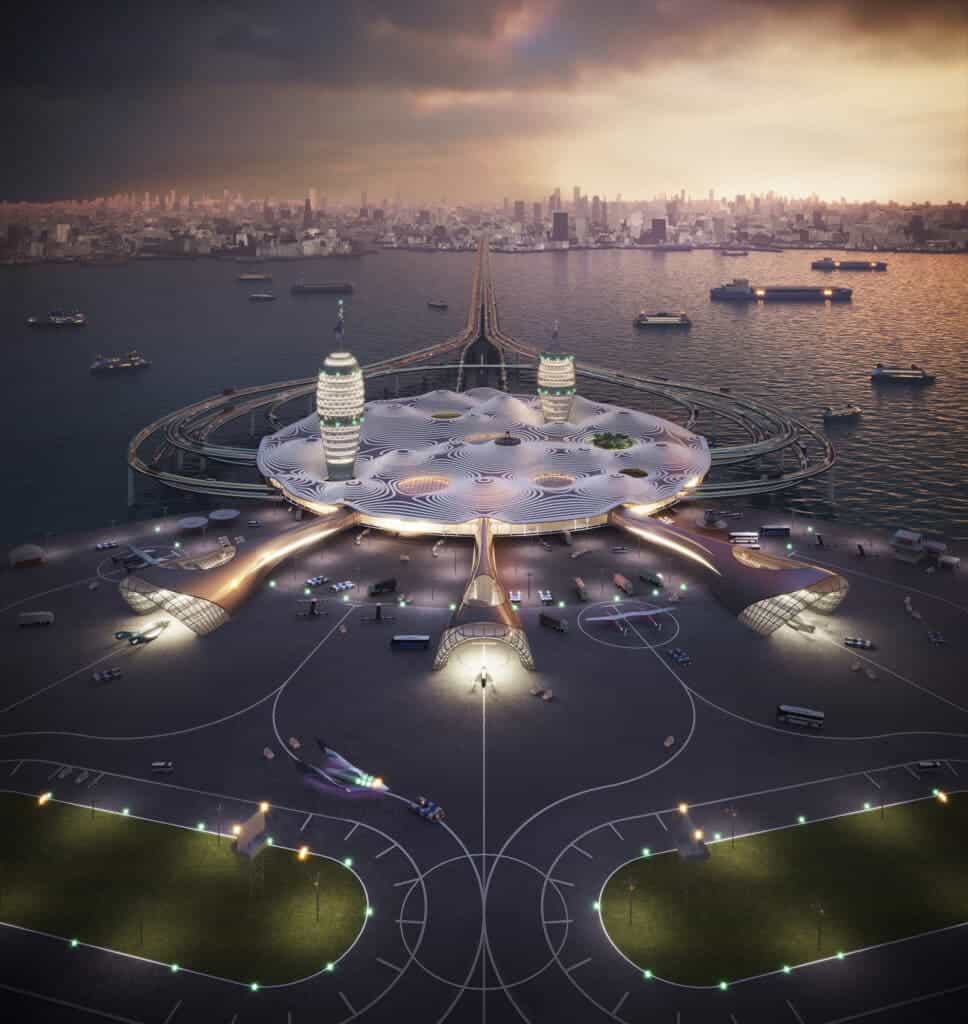
“The design of SPACEPORT CITY is based on creating continuity, while retaining identity of each element. Every function is enclosed within a separate spherical volume, and a large roof covered with kinetic solar panels is “hovering” over these buildings, covering also two levels of large plazas – one at the level of departures and one at the level of arrivals,” according to a press release from Noiz Architects.
“A dynamic design of piers emerges from the main volume of the building, cerebrating the special journey waiting ahead. The organic complex packed within a city-scale circular disk forms a magnificent 5th façade, making the space port recognizable from far away from the space,” the company adds.
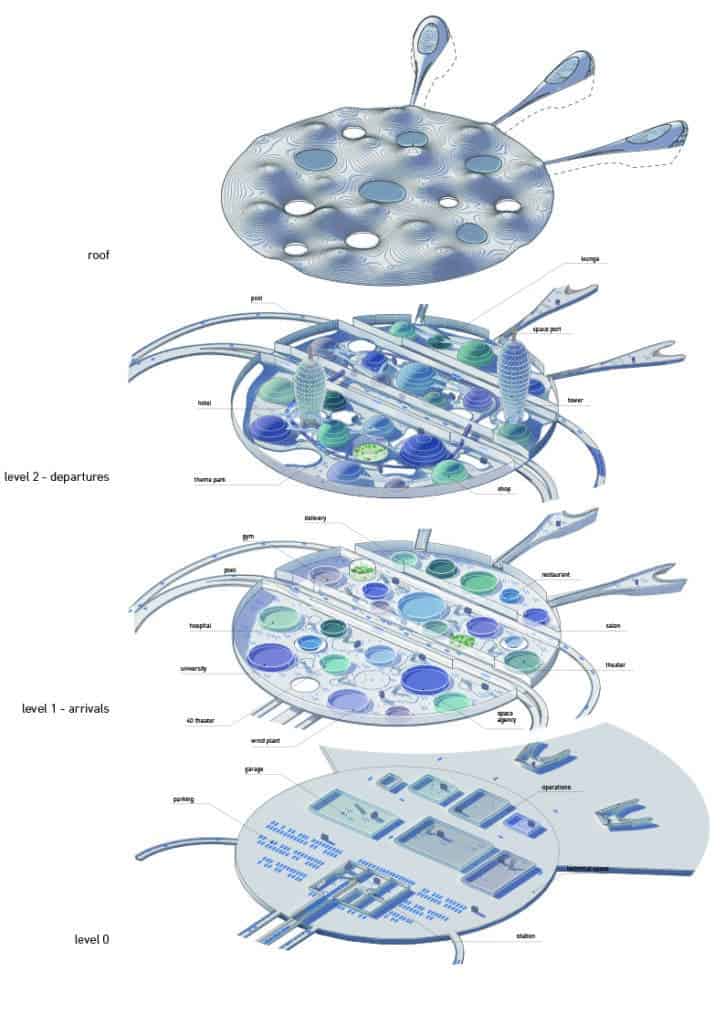
Spacecraft that take off horizontally like a plane rather than horizontally like a rocket are already in development by companies like Blue Origin and Virgin Galactic. The latter seems to be the most advanced, having flown crewed test flights and preselling 600 90-minute spaceflights, each priced at $250,000 a pop.
For now, Spaceport Japan is simply a stunning computer render, but the concept may one day lay the groundwork for the urban spaceports we’ve all fantasized about.









